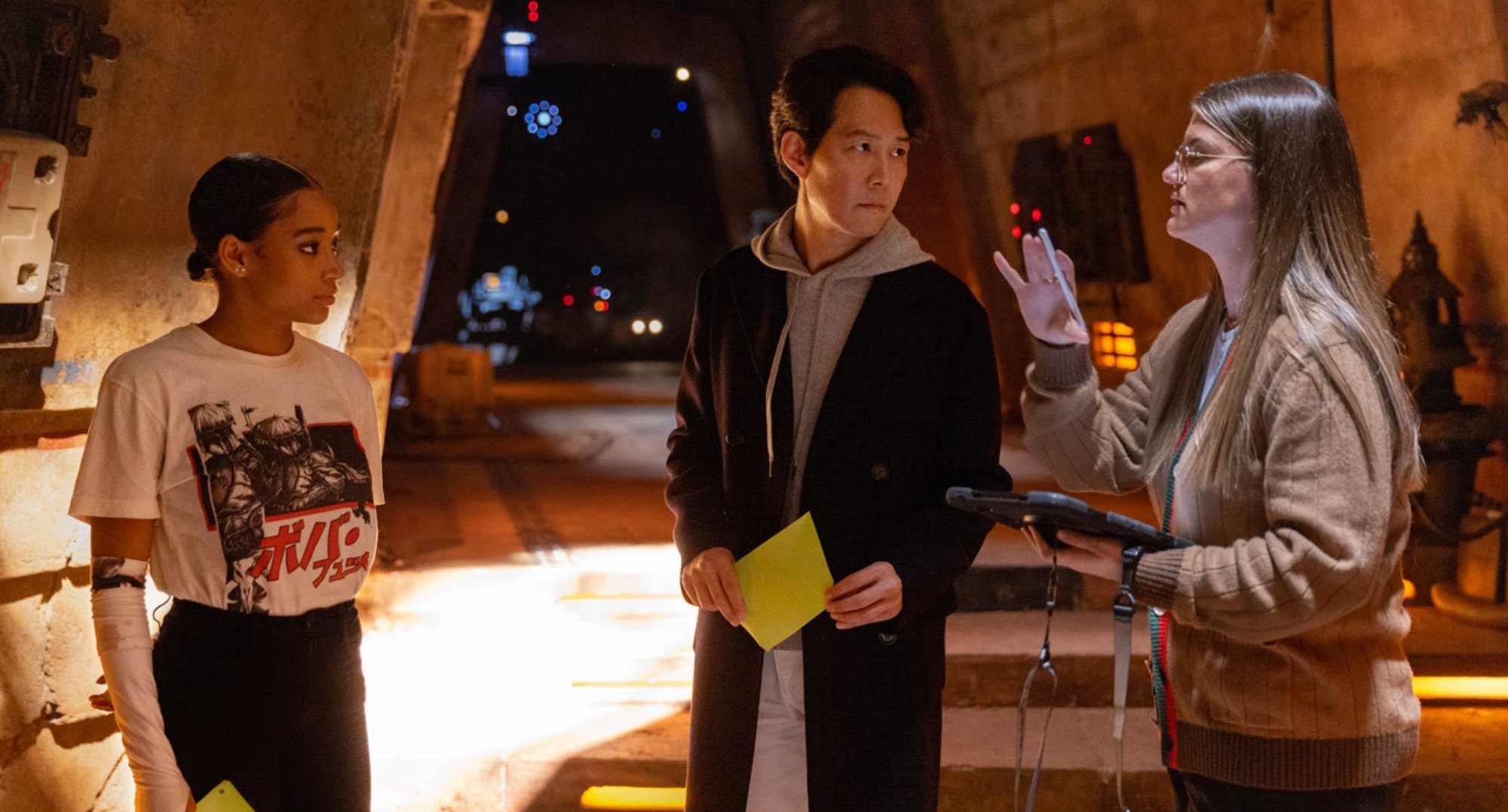Historical Context and Significance: The Acolyte Time

The concept of “The Acolyte Time” in literature emerged during the Gothic and horror genres’ formative years. Its origins can be traced back to the late 18th century, a period characterized by a fascination with the supernatural, the macabre, and the exploration of the human psyche’s darker recesses.
The Acolyte, a highly anticipated upcoming Disney+ series set in a galaxy far, far away, boasts a talented cast that includes Dean-Charles Chapman. The young British actor, known for his roles in Game of Thrones and 1917, brings his captivating presence to the Star Wars universe.
As the Acolyte delves into the mysteries of the High Republic era, Chapman’s character promises to add intrigue and depth to this thrilling and immersive story.
Gothic literature, with its emphasis on mystery, suspense, and the uncanny, provided a fertile ground for the development of “The Acolyte Time.” Authors such as Horace Walpole, Ann Radcliffe, and Matthew Lewis employed the device to create an atmosphere of foreboding and unease, often setting their stories in ancient castles, remote abbeys, or other isolated and atmospheric locations.
The Acolyte’s Time, a historical drama series, has garnered critical acclaim for its nuanced storytelling and powerful performances. For those seeking further insights into the world of entertainment, Rotten Tomatoes offers a comprehensive database of film and television reviews, providing valuable information for discerning viewers to navigate the vast entertainment landscape.
As The Acolyte’s Time continues to captivate audiences, its presence on Rotten Tomatoes ensures that its impact and legacy will be documented and shared with future generations.
Origins and Evolution
The term “acolyte” itself derives from the Greek word “akolouthos,” meaning “follower” or “attendant.” In the context of literature, an acolyte typically refers to a young or inexperienced individual who is drawn into a world of darkness and danger. This character often serves as a conduit for the reader’s own fears and anxieties, as they navigate a treacherous path filled with supernatural threats and moral dilemmas.
Over time, “The Acolyte Time” evolved into a more nuanced and complex literary device. Authors began to explore the psychological and emotional toll that such experiences could take on their characters, delving into themes of guilt, redemption, and the struggle between good and evil.
Key Authors and Works
- Edgar Allan Poe: Poe’s tales, such as “The Tell-Tale Heart” and “The Fall of the House of Usher,” masterfully employed “The Acolyte Time” to create a sense of psychological horror and unease.
- Mary Shelley: Shelley’s iconic novel “Frankenstein” features an acolyte figure in the character of Victor Frankenstein, whose hubris and ambition lead him to create a monstrous creature that ultimately destroys him.
- Bram Stoker: Stoker’s classic horror novel “Dracula” revolves around a group of acolytes who must confront the titular vampire and his supernatural powers.
Literary Analysis and Interpretation

The Acolyte Time is a literary device that evokes a sense of dread and anticipation, using various techniques and devices to create a haunting and unsettling atmosphere. The use of symbolism, imagery, and foreshadowing contributes to the psychological and emotional impact of the acolyte time on both characters and readers.
Symbolism
Symbolism plays a crucial role in creating the acolyte time. Objects, colors, and actions are imbued with symbolic meanings that evoke specific emotions and associations. For example, the color red is often used to symbolize danger, violence, and passion, while the number three is associated with the supernatural and the occult. By employing these symbols, authors can create a sense of foreboding and unease, hinting at the impending arrival of something sinister.
Imagery
Vivid and evocative imagery is another key element in the creation of the acolyte time. Authors use sensory details to create a tangible and immersive experience for readers, drawing them into the world of the story and making them feel as if they are experiencing the events firsthand. This use of imagery can be particularly effective in horror and suspense fiction, as it can heighten the sense of fear and dread.
Foreshadowing
Foreshadowing is a technique used to hint at future events without explicitly revealing them. This can be done through subtle clues, such as a character’s premonition or a seemingly innocuous object that later takes on a sinister significance. Foreshadowing creates a sense of anticipation and suspense, keeping readers on the edge of their seats as they wait to see what will happen next.
Psychological and Emotional Impact
The acolyte time has a profound psychological and emotional impact on both characters and readers. The sense of dread and anticipation it creates can lead to feelings of anxiety, fear, and paranoia. Characters may become increasingly isolated and withdrawn, as they feel the weight of the impending doom bearing down on them. Readers, too, may experience a sense of unease and discomfort as they are drawn into the world of the story and forced to confront their own fears and anxieties.
Contemporary Applications and Adaptations

The enduring appeal and relevance of “The Acolyte Time” in the 21st century is evident in its numerous adaptations and reinterpretations in modern literature, film, and other media. Contemporary creators have drawn inspiration from the concept to engage with current social and cultural issues, exploring themes of identity, alienation, and the search for meaning in a rapidly changing world.
Literature
In literature, “The Acolyte Time” has been adapted into novels, short stories, and plays that grapple with contemporary concerns. For example, Jhumpa Lahiri’s novel “The Namesake” (2003) explores the experiences of Indian immigrants in America, using the concept of the acolyte time to depict the protagonist’s struggle to reconcile his traditional heritage with his new life in the West.
Film
In film, “The Acolyte Time” has been used to create evocative and thought-provoking narratives. Darren Aronofsky’s film “Black Swan” (2010) depicts the psychological and physical toll of ambition and perfectionism on a young ballerina, using the acolyte time as a metaphor for the protagonist’s descent into madness.
Other Media, The acolyte time
Beyond literature and film, “The Acolyte Time” has also been reinterpreted in other media such as television, music, and visual arts. In the television series “The OA” (2016-2019), the concept is used to explore the themes of trauma, healing, and the power of storytelling. In music, artists such as Bon Iver and Sufjan Stevens have incorporated the concept into their lyrics, using it to reflect on themes of loss, longing, and the passage of time.
The acolyte time is a period of intense religious devotion and study for young people in some Christian traditions. During this time, acolytes learn about the faith and prepare for a life of service. One of the most important aspects of the acolyte time is the barash vow , which is a promise to live a life of chastity, poverty, and obedience.
The barash vow is a reminder of the acolyte’s commitment to God and to the church. It is a powerful symbol of the acolyte’s desire to serve others and to make a difference in the world.
The Acolyte time is an upcoming American television series created for Disney+. For more information on the series, including reviews and ratings, you can check out Rotten Tomatoes The Acolyte. The Acolyte time is set a century before the events of Star Wars: Episode I – The Phantom Menace, and will follow a group of young Padawans as they investigate a series of dark secrets and face the looming shadow of the dark side.
The Acolyte time is a period of transition, a time when the old order is crumbling and the new has yet to take shape. It is a time of great uncertainty and upheaval, when anything is possible. As we navigate this time, it is important to remember that we are not alone.
We are all in this together, and we must support each other. Like the Alec Baldwin tragedy that occurred during the filming of Rust, the Acolyte time is a reminder that even in the darkest of times, there is always hope.
We must never give up on each other, and we must always strive to create a better future for ourselves and our children.